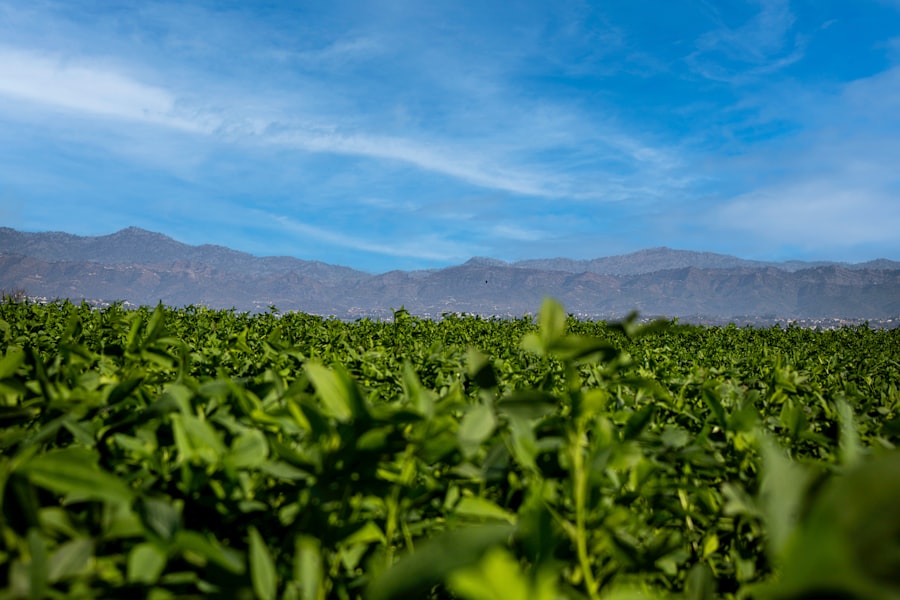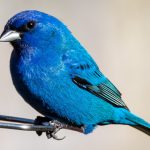Providing adequate shade is crucial for maintaining poultry comfort during hot weather. This can be accomplished by installing shade cloth or tarps over coops and runs, or by situating poultry housing in naturally shaded areas of the property. It is essential to ensure that shade is available throughout the day, accounting for the sun’s changing position.
Planting trees or shrubs around the coop can offer natural shade while enhancing the area’s appearance. An alternative method for providing shade is to construct a covered area within the run where birds can seek refuge from direct sunlight. This can be achieved by building a simple structure using wood and a tarp, or by repurposing existing structures such as old gazebos or pergolas.
Regardless of the chosen method, it is important to regularly inspect the shade provisions to ensure their continued effectiveness, taking into account potential changes due to shifting sunlight or weather conditions.
Table of Contents
- 1 Proper Ventilation
- 2 Cool Water and Ice Treats
- 3 Dust Baths
- 4 Frozen or Chilled Fruits and Vegetables
- 5 Limiting Activity
- 6 Monitoring Health
- 7 FAQs
- 7.1 What are some signs that chickens are overheated?
- 7.2 What are some good ways to keep chickens cool on a hot day?
- 7.3 How important is ventilation for keeping chickens cool?
- 7.4 Are there specific breeds of chickens that are better suited to hot climates?
- 7.5 What should I do if I suspect that my chickens are suffering from heat stress?
Key Takeaways
- Providing shade is essential for keeping animals cool and protected from the sun’s heat.
- Proper ventilation in the animal housing is crucial for maintaining a comfortable and cool environment.
- Cool water and ice treats can help animals stay hydrated and regulate their body temperature during hot weather.
- Dust baths can help animals keep cool and maintain healthy skin and feathers.
- Offering frozen or chilled fruits and vegetables can provide a refreshing and nutritious treat for animals during hot weather.
- Limiting activity during the hottest parts of the day can help prevent animals from overheating.
- Regularly monitoring the health of animals is important to ensure they are coping well with the heat and to address any issues promptly.
Proper Ventilation
Preventing Heat and Humidity Buildup
In addition to providing shade, proper ventilation is crucial for keeping poultry cool in hot weather. Good airflow helps to prevent the buildup of heat and humidity inside the coop, which can be detrimental to the birds’ health. This can be achieved by installing windows and vents in the coop that can be opened to allow fresh air to circulate.
Strategic Ventilation and Cooling Methods
It’s essential to position these openings strategically to encourage cross-ventilation and prevent hot spots from forming. Another way to improve ventilation is by using fans or misters in the coop and run. Fans can help to move air around and create a cooling effect, while misters can lower the ambient temperature by spraying a fine mist of water into the air.
Using Misters with Caution
However, it’s important to use caution when using misters, as excessive moisture can lead to damp conditions that are conducive to mold and respiratory issues for the birds.
Cool Water and Ice Treats

Providing access to cool water is crucial for keeping poultry hydrated and cool in hot weather. This can be achieved by regularly refreshing their water supply with cold water from a hose or by adding ice cubes to their waterers. Additionally, you can place shallow dishes of water in the coop and run for the birds to wade in and cool off.
Another way to help poultry beat the heat is by offering them ice treats. This can be as simple as freezing a block of ice with pieces of fruit or vegetables inside, or by freezing water in a shallow container and then breaking it up into chunks for the birds to peck at. These treats not only provide a source of hydration but also offer a fun and refreshing activity for the birds.
Dust Baths
Dust baths are an important part of a chicken’s natural behavior and also serve as a way for them to cool off in hot weather. Providing a designated area for dust bathing, such as a shallow box filled with sand, diatomaceous earth, or wood ash, allows the birds to coat themselves in fine dust which helps to absorb excess moisture and oils from their feathers. It’s important to ensure that the dust bathing area is kept dry and replenished regularly, as it can become compacted and soiled over time.
Additionally, placing the dust bath in a shaded area can help to keep the sand or earth cool, providing an extra level of relief for the birds.
Frozen or Chilled Fruits and Vegetables
Offering frozen or chilled fruits and vegetables is another way to help poultry stay cool and hydrated in hot weather. This can be achieved by freezing small pieces of produce such as berries, melon, or cucumber and offering them as a refreshing snack for the birds. Not only does this provide a source of hydration, but it also offers essential nutrients and enrichment for the birds.
Another option is to chill fruits and vegetables in the refrigerator before offering them to the birds. This can be particularly beneficial for produce with high water content, such as lettuce or celery, which can provide an extra boost of hydration for the birds.
Limiting Activity

Providing a Comfortable Environment
In extreme heat, it’s essential to limit the activity of poultry to prevent them from overheating. This can be achieved by encouraging them to rest in shaded areas during the hottest parts of the day and providing ample space for them to spread out and avoid crowding.
Minimizing Stress and Disturbances
Additionally, reducing unnecessary disturbances such as handling or moving the birds can help to minimize stress and conserve their energy.
Adjusting Feeding Times
Another way to limit activity is by adjusting feeding times to cooler parts of the day, such as early morning or late evening, when temperatures are more bearable. This can help to prevent the birds from exerting themselves during the heat of the day and reduce the risk of heat stress.
Monitoring Health
Finally, it’s crucial to closely monitor the health of poultry during hot weather. This includes regularly checking for signs of heat stress, such as panting, lethargy, or reduced appetite, and taking immediate action if any issues are observed. Providing access to cool water, shade, and ventilation is essential, but it’s also important to be proactive in preventing heat-related illnesses.
Another aspect of monitoring health is ensuring that the birds have access to a balanced diet that provides essential nutrients and electrolytes. This can be achieved by offering commercial poultry feeds formulated for hot weather conditions or by supplementing their diet with electrolyte solutions or probiotics. In conclusion, keeping poultry cool in hot weather requires careful planning and attention to their environmental needs.
By providing shade, proper ventilation, cool water and ice treats, dust baths, frozen fruits and vegetables, limiting activity, and monitoring health, you can help your birds stay comfortable and healthy during the hottest months of the year. With these strategies in place, you can ensure that your poultry not only survives but thrives in even the most sweltering conditions.
If you’re looking for more tips on keeping chickens happy and healthy, check out this article on creating a garden chicken coop. It offers great advice on how to provide a comfortable and cool environment for your chickens, especially on hot days.
FAQs
What are some signs that chickens are overheated?
Some signs that chickens are overheated include panting, holding their wings away from their bodies, and reduced egg production. It’s important to monitor your chickens for these signs, especially on hot days.
What are some good ways to keep chickens cool on a hot day?
Some good ways to keep chickens cool on a hot day include providing plenty of shade, ensuring they have access to fresh, cool water at all times, and setting up fans or misters in their coop or run. You can also offer frozen treats, such as ice blocks with fruit or vegetables frozen inside, to help them cool down.
How important is ventilation for keeping chickens cool?
Ventilation is crucial for keeping chickens cool on hot days. Good airflow helps to reduce the temperature inside the coop and prevent heat stress in the chickens. Make sure that your coop has adequate ventilation, such as windows, vents, or fans, to help keep the air moving and prevent it from becoming too hot and stagnant.
Are there specific breeds of chickens that are better suited to hot climates?
Yes, some chicken breeds are better suited to hot climates than others. Breeds such as Leghorns, Rhode Island Reds, and Sussex are known for their heat tolerance and ability to thrive in warmer temperatures. If you live in a hot climate, consider choosing breeds that are better adapted to the heat.
What should I do if I suspect that my chickens are suffering from heat stress?
If you suspect that your chickens are suffering from heat stress, it’s important to take action immediately. Move them to a cooler, shaded area, provide them with plenty of fresh, cool water, and consider setting up fans or misters to help lower the temperature. You can also offer electrolyte supplements to help them rehydrate and recover from the heat stress. If you’re concerned about their health, consult a veterinarian for further advice.
Meet Walter, the feathered-friend fanatic of Florida! Nestled in the sunshine state, Walter struts through life with his feathered companions, clucking his way to happiness. With a coop that’s fancier than a five-star hotel, he’s the Don Juan of the chicken world. When he’s not teaching his hens to do the cha-cha, you’ll find him in a heated debate with his prized rooster, Sir Clucks-a-Lot. Walter’s poultry passion is no yolk; he’s the sunny-side-up guy you never knew you needed in your flock of friends!







